Every year, Giorgos Chrysochos and Christos Pilyouras dedicate countless hours to crafting around 1,500 hot air balloons by hand. Using rectangular sheets of tissue paper in two vibrant colors, they meticulously glue each piece together and then attach them to a frame made from reeds sourced from a nearby swamp. Their signature red and yellow combination pays homage to both the “Tzoumpelou” (the traditional Tsakonian costume) and the striking colors of Kokkinovrachos – the red cliff that encircles Leonidio – along with the ochre tones of the town’s buildings. While the two-meter-tall red-and-yellow balloon is a staple, Giorgos and Christos love experimenting with different colors and shapes, with each Easter unveiling a new theme, announced on Holy Saturday morning in the Town Hall square.
Last year, their ambitious creation was a giant clock tower – an impressive replica of the 18-meter-high blue tower that stands at the heart of Leonidio. To assemble the enormous balloon, the two had to lay out the paper pieces across a football field. One memorable Easter, Giorgos even crafted a bright red heart-shaped balloon to propose to his beloved. Regardless of the design, all their balloons use 100% cotton fabric for the kollimara – the gasoline-soaked cloth that creates the necessary lift. This thoughtful detail ensures that once the balloon lands, the fire is safely extinguished, preventing any risk of wildfires.

© Perikles Merakos
According to Kostas Sourligas, another seasoned balloon maker, the balloons’ flights can last for hours. He smiles as he recalls how many locals attend the Resurrection service in comfortable clothes, ready to chase after the balloons once the service ends, determined to catch one before it descends.
Unlike other Greek towns that have tried to replicate this impressive tradition, Leonidio benefits not only from the skill of its residents but also from the gentle air currents of the Dafnonas Valley at midnight. These conditions create a luminous “river” that flows slowly across the sky toward the sea. On the ground, a playful rivalry unfolds between the various parishes of Leonidio, each trying to launch the most balloons. It’s even said that once, a priest began the “Christ is Risen” chant 15 minutes early to give his parish a head start.
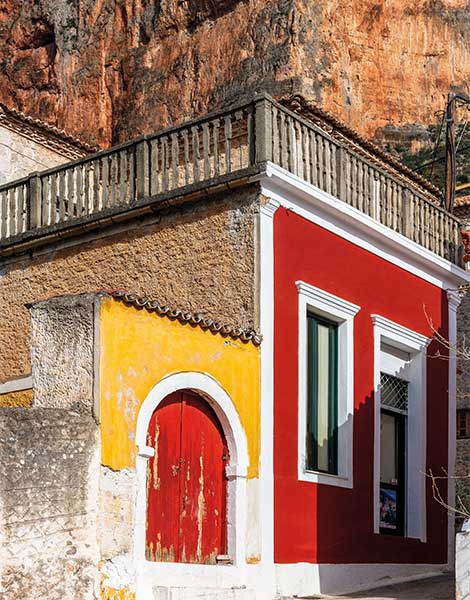
© Perikles Merakos
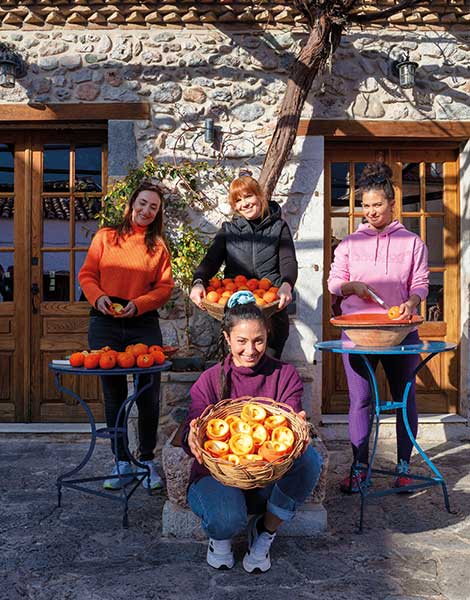
© Perikles Merakos
Stone mansions and bitter oranges
Another tradition that began in the town about 14 years ago involves small orange lanterns made from the region’s abundant bitter oranges. The custom was started by Angeliki Chioti-Poutselas, who lived opposite the Church of Aghia Kyriaki. With the help of her son Giorgos, the Commercial Association and the Municipality, the lanterns gradually spread across nearly every street.
Weeks before Easter, groups of women gather in the afternoons to hollow out thousands of oranges, storing the peels in freezers. On Good Friday, families decorate their homes and shops with the lanterns in preparation for the Epitaphios procession. As the streets glow with candlelight, the air fills with a sweet fragrance as the orange peels scorch and caramelize, adding a magical touch to the evening. The stone mansions of the 19th century provide a stunning backdrop to this enchanting scene.
Kostas Trochanis, former president of the “Archive of Tsakonia” association, explains that Leonidio was once very wealthy, thanks to many local shipowners who held shares in Spetses ships and traded in the Danube region, Romania, Istanbul, Varna, Baku, and elsewhere. An example of the unique way in which this isolated corner of the Peloponnese was able to partake in 19th-century Balkan cosmopolitanism was that some families had not just one, but two pianos in their homes.

© Perikles Merakos
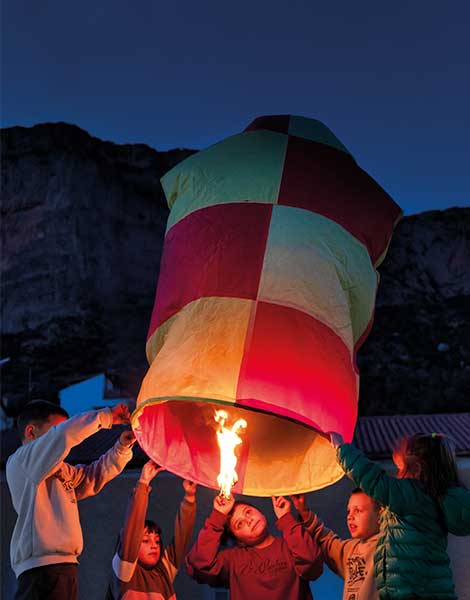
© Perikles Merakos
The Tsakonian identity
The unique Tsakonian identity is another of the region’s great advantages. If you find yourself at a traditional café in Tyros, 17km north of Leonidio, you’ll likely hear older locals speaking in the Tsakonian dialect. According to Sotiria Laloudaki, president of the Tyros cultural association, even younger generations speak the language. In fact, most local elementary school children attend weekly lessons offered by the “Tsakonoparea” group. Besides language, traditional dances, and music, young people connect with their heritage through practices like crafting hundreds of floating lanterns that are symbolically released into the sea before Easter, in honor of the village’s old sailors.
Another hub for preserving centuries-old traditions is the “Tsakonian Weaving” workshop in Tyros, maintained by Thomais Rodopoulou and her daughter, Elisavet. Weaving in the area dates back to 1890 when Polyxeni Dounia moved from Aydin, Asia Minor, to Leonidio, bringing her skills with her. Over the years, dozens of women learned the skill and worked in local workshops, creating rugs with geometric patterns and vivid colors. Elisavet is one of the few remaining weavers in Greece who still dyes her own yarn with natural ingredients and spins wool herself.
She views weaving as not only a creative connection to tradition but also a bridge for communication and solidarity among women. She even guides visitors through a two-hour lesson using small tabletop looms. The vertical loom is beginner-friendly, requiring only the use of fingers instead of a shuttle. The only tool is a comb used to press down each woolen line, making the fabric tighter.
At the professional looms – patented by Elisavet’s grandmother – her mother weaves impressive rugs that combine traditional and modern designs, in various sizes. Exceptional ancient rugs can be viewed at the Tsouchlou Mansion in Leonidio, where the “Archive of Tsakonia” also offers weaving classes for adults and children.
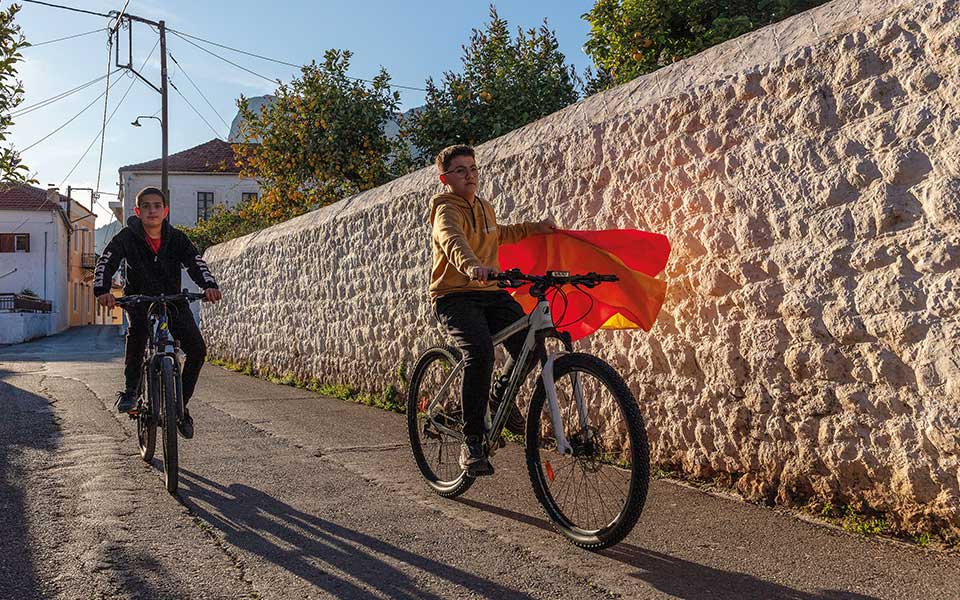
© Perikles Merakos
The “100-Day Road”
One of the lesser-known yet fascinating stories of the greater Leonidio area is the tale of the “100-Day Road.” Angeliki Katti, a philologist and oral history researcher, has interviewed elders who saw the road’s construction as children. It was a grassroots project led by the people of Kosmas, a remote mountain village in Arcadia, under Kyriakos Tseronis.
After WWII, Kosmas was at risk of abandonment due to isolation. The only connection to Leonidio and Geraki was via footpaths, so building a 17km-long road to Laconia was a bold and ambitious dream. In March 1951, the villagers decided that every young man would dedicate ten days of volunteer labor to complete the road before the feast of Aghioi Anargiri.
The work proved more challenging than anticipated, and before long elderly people, women, and children started to pitch in. According to Angeliki’s interviews, when the first car finally reached the village square, people rang church bells and kissed the vehicle’s tires. It’s a powerful image to keep in mind while sipping coffee under the square’s towering plane trees.
Driving along the road in the opposite direction – from Kosmas to Laconia – one tries to imagine how many firs were felled and how many rocks were broken by hand. It’s almost unbelievable that a postwar village could complete such a task in just three months.
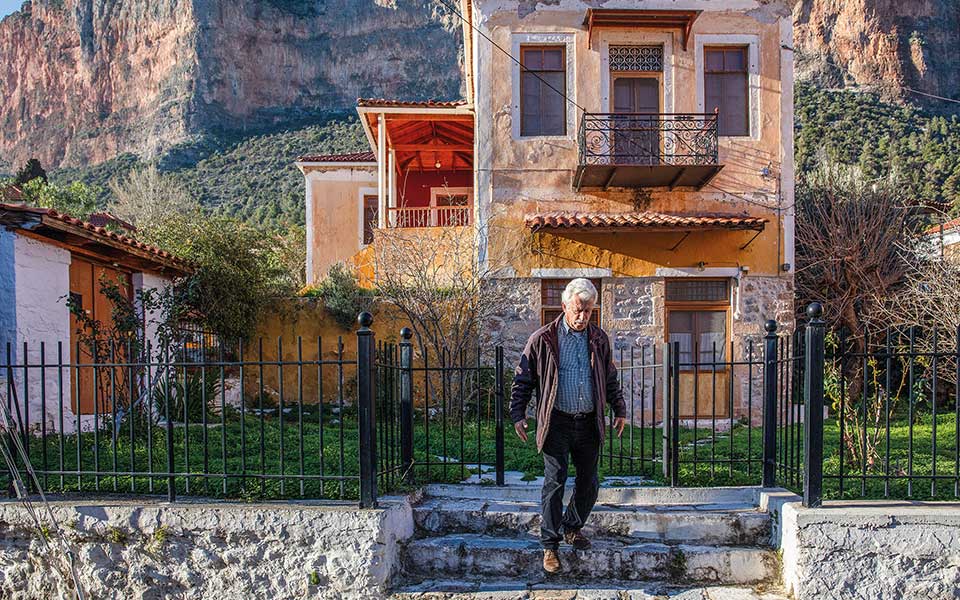
© Perikles Merakos
A fitting ending: weaving for the future
A fitting end to this journey is the public weaving workshop in Geraki, Laconia, run by Chrysoula Stamatopoulou. Once the village’s last weaver, she now teaches dozens of students each year. Although Geraki is close to Tsakonia, its weaving motifs and techniques differ. The main pattern here is the “tree of life,” symbolizing fertility and prosperity.
As I look at a prayer rug – once woven by women to for the continued good health of their loved ones – I realize that the deeper similarities between these traditions may surpass their technical differences. A shared value that runs through both the woolen threads of southeastern Peloponnese and the breaking of rocks by hand to make roads is the desire for the common good. And perhaps that is the invisible “warp” that strengthens the colorful “weave” of Easter.
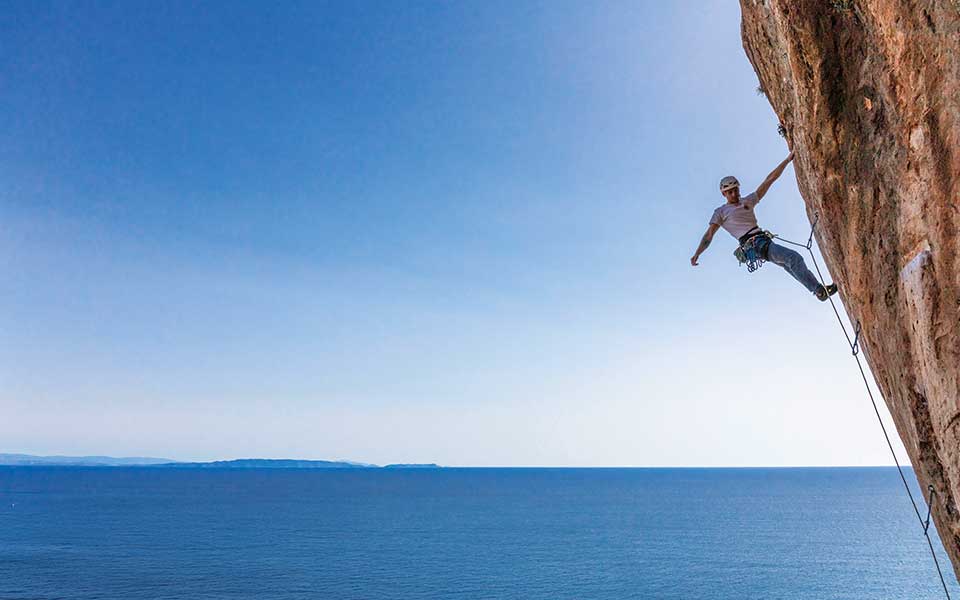
© Perikles Merakos
Leonidio: A place of elevation
Leonidio’s geomorphology continues to fuel its growth – but in a new way. Over the past 15 years, the 240m-high Kokkinovrachos and the limestone cliffs that stretch from Kyparissi to Aghios Andreas have been drawing climbers from Greece and beyond. With 2,500 climbing routes spread across the region, there are options for all levels of difficulty.
Sofia Georgantoni, who runs a climbing gear shop in Leonidio, estimates that between 200 and 400 climbers are active daily. The season peaks from October to Christmas, with daily visitor numbers exceeding 1,000. This kind of tourism attracts international visitors in fall and spring, complementing the summer crowd and allowing Leonidio to enjoy a 12-month tourism season.
Kostas Grafanakis, a climbing coach and municipal route inspector, notes that Leonidio is recognized internationally as Europe’s top winter climbing destination. Satisfied visitors often return to try new routes, with the added thrill of climbing above a traditional settlement – though coastal and gorge routes also offer stunning experiences. If you notice parked vans along the provincial road, take a closer look at the cliffs – you’ll likely see climbers scaling the rocks, a truly spectacular sight.












